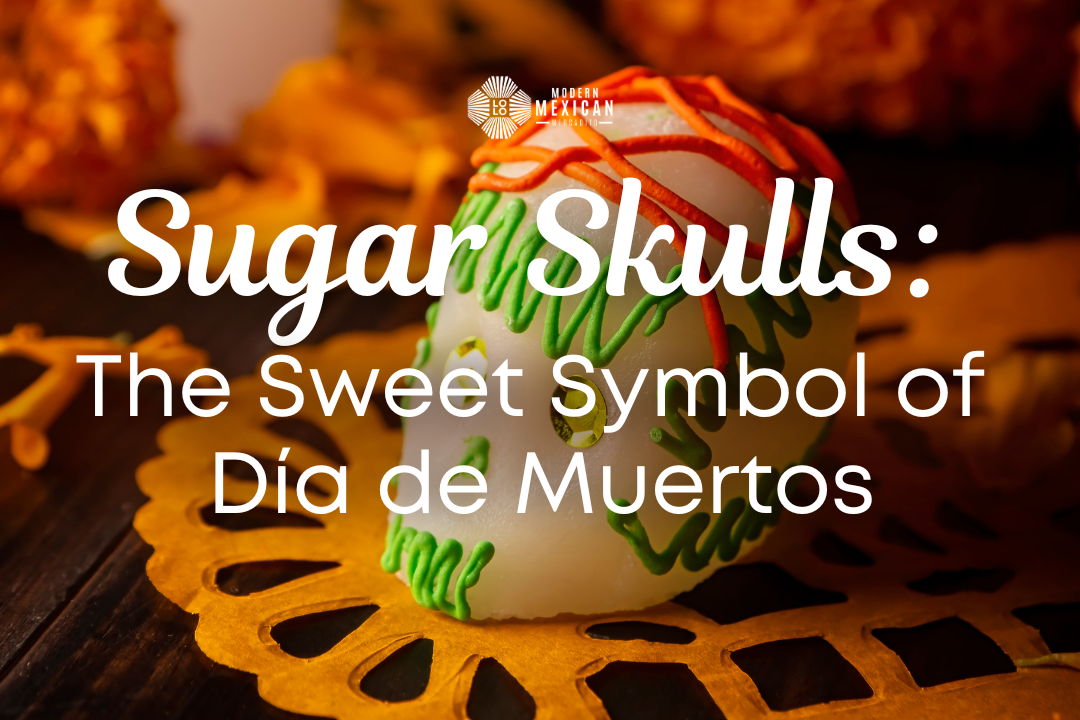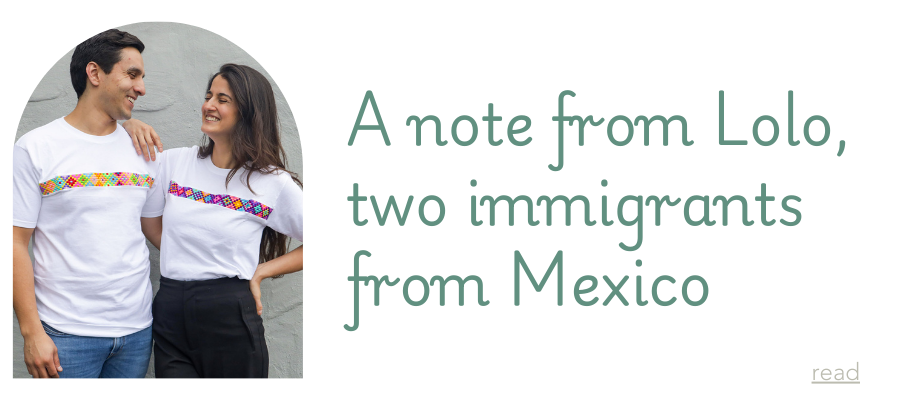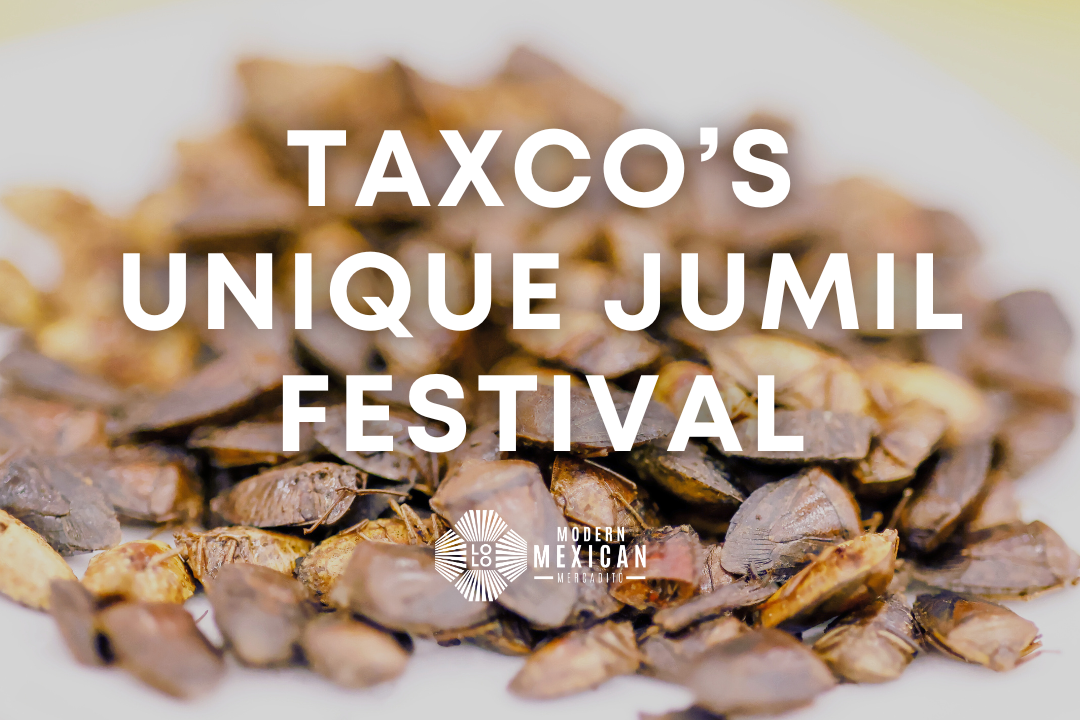If you’ve ever seen the vibrant skulls that decorate altars during Día de Muertos (Day of the Dead) or perhaps in colorful murals, face paint, or even tattoos, you’ve encountered the iconic calaveras de azúcar—sugar skulls. But did you know that these whimsical skulls, with their bright colors and ornate designs, actually hold deep cultural meaning rooted in pre-Hispanic traditions?
Día de Muertos is a deeply significant Mexican holiday dedicated to honoring deceased loved ones. Rather than mourning death, this celebration embraces it as a natural part of life’s cycle. Central to this holiday is the creation of elaborate altars (ofrendas), where sugar skulls are often featured. These skulls serve as offerings, reminders of mortality, and connections to the past.
But what exactly are sugar skulls, and where did this unique tradition come from? Let’s dive into their rich history in this blog post!

The Origin of Sugar Skulls
The tradition of using skulls in rituals dates back to ancient Mesoamerica, long before the arrival of the Spanish. For civilizations like the Mexicas and Mayas, death was viewed not as the end of existence but as a transformation from one stage of life to the next. For example, the Aztecs/Mexicas believed that the souls of the dead continued on a journey to the underworld (Mictlán), where they would find their final resting place.
In pre-Hispanic times, real human skulls were kept as trophies or used in religious rituals, symbolizing both death and rebirth. One of the most well-known uses of skulls was the Tzompantli, a rack of real human skulls displayed as an offering to the gods, symbolizing the power of death and life’s continuation through sacrifice. In addition to this, the Aztecs would craft figures made from amaranth, honey, and sometimes chocolate to offer to their gods during religious ceremonies. These edible figurines were used in a similar way to symbolize life, death, and devotion, laying the groundwork for what would eventually become sugar skulls.

However, the tradition of calaveras de azúcar (sugar skulls) as we know them today was introduced after the arrival of the Spanish. During colonization, indigenous customs were often fused with Catholic practices. The Spanish brought with them the technique of making alfeñique, a moldable sugar paste, which indigenous communities quickly adapted. Using this pliable sugar, they crafted skull-shaped candies in place of real skulls and the amaranth figurines once used for offerings. The result was the modern sugar skull—a sweet substitute that retained the deep symbolic meaning of honoring the dead and reflecting life’s fragility.
The Role of Sugar Skulls During Día de Muertos
Sugar skulls have since become an integral part of Día de Muertos celebrations, which take place from October 31st to November 2nd (and in other places before that). These skulls are made from a few simple ingredients—sugar, meringue powder, and water—molded into the shape of a skull, and then decorated with colorful icing, foil, and even shiny sequins.
You’ll often find sugar skulls adorning the ofrendas (altars) created by families to honor their deceased relatives. These altars are filled with items that were loved by the departed—food, drinks, candles, marigold flowers, and, of course, calaveras de azúcar. Each altar is a personal and heartfelt way for families to welcome the spirits of their loved ones back to the living world for a short time. (read this blog post to learn more about the elements that are included in an ofrenda)
An interesting tradition that comes with sugar skulls is that they are sometimes personalized. Small sugar skulls are often made with the names of the deceased, and in some cases, they are also gifted to children or friends—reminding them of their inevitable fate but in a playful, lighthearted way. While this might seem morbid for someone unfamiliar with the tradition, it’s actually a joyful reminder to celebrate life and embrace death as a natural part of existence.
What Exactly Are Sugar Skulls?
While sugar skulls have become a popular symbol, especially in art and decorations, it’s important to remember that they are also a type of candy—sweet treats that are part of the Día de Muertos tradition. Their production uses a centuries-old technique called alfeñique, which refers to the sugar paste used to mold the skulls.
Though traditional sugar skulls are made primarily of sugar, today they also come in a variety of forms. Some are crafted from chocolate or amaranth (a highly nutritious ancient grain), sometimes mixed with honey or piloncillo (unrefined Mexican cane sugar). Whether made from sugar or other ingredients, they are decorated with colorful, edible designs, and each one is unique.

Sugar skulls come in various sizes—from tiny, bite-sized skulls to larger, more elaborate ones that serve as focal points on altars. In some regions of Mexico, it’s not uncommon for children to eat smaller sugar skulls as part of the festivities. However, larger skulls are typically used for decoration and to honor the deceased.
Modern Sugar Skulls
While traditional sugar skulls remain a beloved part of Día de Muertos celebrations, modern interpretations have also emerged. Nowadays, it’s not unusual to see skulls made from materials other than sugar. Artists create stunning clay skulls or ceramic versions that serve as long-lasting decorations, often painted in the same vibrant, intricate style as the sugar skulls.
These newer interpretations are perfect for those who want to celebrate the holiday year-round or for families who want a reusable keepsake to place on their altars each year. In many ways, these modern skulls have become symbolic art pieces, bringing the essence of Día de Muertos into homes, even outside of Mexico.

While traditional sugar skulls hold a deep historical and cultural meaning, the evolution of their form reflects how the celebration of Día de Muertos continues to adapt and thrive in both modern and global contexts. But whether made of sugar, clay, or another material, sugar skulls continue to serve as reminders of the importance of honoring our ancestors and embracing the cycle of life and death.
--
So, what do you think? Were you familiar with the origin of sugar skulls? Have you ever tasted sugar skull as candy? What do you like most about sugar skuls? Let us know in the comments below, we love to read your comments and look forward to your annecdotes! Also, let us know if there is any other iconic figure from Day of the Dead you would like for us to write about.
Don’t forget to check out our Día de Muertos collection where you can find all essentials for your ofrenda and home decorations and support our efforts to show you our cultura as well as supporting artisans in Mexico!
If you liked this piece, be sure to check out all other articles written about Día de Muertos in our Zócalo blog here, and don’t forget to subscribe to our newsletter, where you will get this and many more content of interests and make sure to give our familia of subscribers exclusive promotions, gifts, first-hand look at all new products and, of course, these articles that we love to write for you all!







